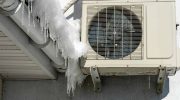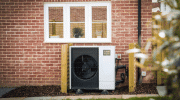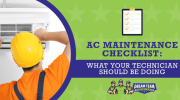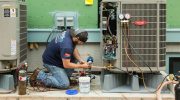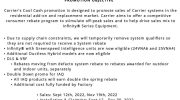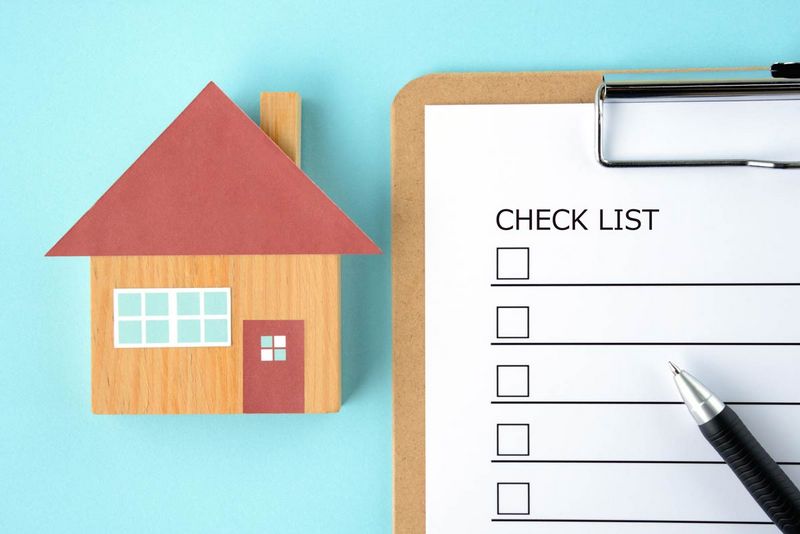
Seasonal HVAC Maintenance Tips
Keep Your System Running Efficiently
Regular maintenance is essential for ensuring that your HVAC system stays in top shape and runs efficiently throughout the year. With seasonal changes, it’s even more important to take proactive steps to keep your system functioning at its best. Here are some helpful tips to help you maintain your HVAC system and optimize its performance:
1. Change your air filters regularly to improve indoor air quality and prevent dust and debris from clogging your system.
2. Schedule a professional HVAC tune-up at the beginning of each season to catch any potential issues early and prevent breakdowns down the line.
3. Keep the area around your outdoor unit clean and clear of debris, shrubs, and other obstructions to ensure proper airflow and prevent overheating.
By following these simple maintenance tips, you can extend the lifespan of your HVAC system and save on energy costs in the long run. Don’t wait until something goes wrong—take action now to keep your system running efficiently!
Top Tips for Seasonal HVAC Maintenance
Proper maintenance is essential to keep your HVAC system running efficiently throughout the year. Follow these seasonal tips to ensure optimal performance and extend the lifespan of your system:
- Clean or replace air filters: Dirty filters restrict airflow, decrease efficiency, and increase energy consumption. Clean or replace your filters every 1-3 months.
- Check thermostat settings: Adjust the temperature settings based on the season to maximize comfort and energy savings. Consider installing a programmable thermostat for better control.
- Inspect and clean ductwork: Leaky or dirty ducts can lead to energy loss and poor indoor air quality. Inspect and clean your ductwork regularly to ensure optimal performance.
- Clean outdoor condenser unit: Remove leaves, dirt, and debris from the outdoor unit. Trim vegetation around the unit to promote proper airflow and prevent damage.
- Inspect electrical connections: Check all electrical connections and tighten any loose connections. Faulty electrical connections can lead to system malfunctions and inefficiencies.
- Check refrigerant levels: Improper refrigerant levels can affect system performance and increase energy consumption. Have a professional technician check and correct refrigerant levels if needed.
- Schedule professional maintenance: Regular professional maintenance is crucial for keeping your HVAC system in top condition. Schedule seasonal maintenance visits to ensure all components are functioning properly.
By following these tips, you can improve the efficiency of your HVAC system, lower energy costs, and enjoy a comfortable indoor environment all year round.
Check and Clean Air Filters
One of the most important seasonal HVAC maintenance tips is to regularly check and clean your air filters. Dirty air filters can restrict airflow and cause your system to work harder, leading to reduced efficiency and higher energy bills. They can also contribute to poor indoor air quality.
To maintain the efficiency of your HVAC system, you should check your air filters at least once a month during peak usage seasons, like summer and winter. If the filters are dirty, they should be cleaned or replaced.
To clean your air filters, follow these steps:
- Turn off your HVAC system.
- Locate the air filters, which are usually located in the return air duct or near the air handler unit.
- If your filters are reusable, remove them and gently vacuum or wash them with mild detergent and warm water. Rinse them thoroughly and let them dry completely before reinstalling.
- If your filters are disposable, simply replace them with new ones.
Regularly checking and cleaning your air filters will not only help your HVAC system run more efficiently, but it will also improve the air quality in your home. Clean filters can trap dust, pollen, pet dander, and other airborne particles, preventing them from circulating in your indoor air.
Remember to consult your HVAC system’s manufacturer guidelines and recommendations for specific instructions on how often to clean or replace your air filters.
Inspect and Clear Outdoor Unit
Proper maintenance of your HVAC system includes inspecting and clearing the outdoor unit regularly. This ensures optimal performance and efficiency, while also preventing potential damage or malfunctions.
- Clean the unit: Remove any debris, leaves, or branches that may have accumulated around the unit. Use a brush or a soft cloth to clean the exterior surface.
- Check for obstructions: Make sure there are no obstructions around the unit that could impede airflow. Trim any nearby vegetation or plants to maintain proper clearance.
- Inspect the fins: Carefully inspect the fins on the outdoor unit for any signs of damage or bending. If you notice any issues, contact a professional HVAC technician for repair or replacement.
- Clean or replace filters: It’s important to regularly clean or replace the filters in your HVAC system. This helps to improve indoor air quality and ensure the system runs efficiently.
By regularly inspecting and clearing the outdoor unit of your HVAC system, you can prolong its lifespan and avoid costly repairs. Consider scheduling professional maintenance at least once a year to ensure all components are in proper working condition.
Clean Evaporator and Condenser Coils
Maintenance of your HVAC system is essential to ensure it runs efficiently and keeps your indoor environment comfortable. One important task in seasonal maintenance is cleaning the evaporator and condenser coils.
Why is cleaning the coils important?
The evaporator and condenser coils play crucial roles in the cooling process of your air conditioner. Over time, dust, dirt, and debris can accumulate on these coils, reducing their efficiency and causing your system to work harder and use more energy. Regular cleaning helps to remove these particles and keeps your system running at optimal performance.
Tips for cleaning the coils:
- Turn off the power: Before starting any maintenance tasks, make sure to turn off the power to your HVAC system to avoid any accidents.
- Access the coils: Locate the access panel on your indoor unit to access the evaporator coils. For the condenser coils, they are usually found in the outdoor unit.
- Remove debris: Use a brush or a soft cloth to carefully remove any visible dust or debris from the coils. Avoid using excessive force to prevent damage.
- Clean with a coil cleaner: Apply a coil cleaner solution, following the instructions on the product label. This will help to dissolve any stubborn dirt or grime that is stuck to the coils.
- Rinse with water: After applying the cleaner, rinse the coils with water to remove any remaining residue.
- Dry thoroughly: Allow the coils to dry completely before assembling the unit and turning the power back on.
Benefits of clean coils:
- Improved energy efficiency: Clean coils allow your HVAC system to operate more efficiently, reducing energy consumption and ultimately saving you money on utility bills.
- Enhanced system longevity: By keeping your coils clean, you can extend the lifespan of your HVAC system, avoiding costly repairs or premature replacements.
- Better indoor air quality: Dirty coils can contribute to poor indoor air quality by circulating dust and allergens. Cleaning the coils helps to remove these particles and promotes a healthier living environment.
Don’t neglect the maintenance of your HVAC system – clean evaporator and condenser coils regularly to ensure optimal performance and efficiency!
Lubricate Moving Parts
One important seasonal HVAC maintenance tip is to lubricate the moving parts of your system. This is essential for keeping your system running efficiently and preventing unexpected breakdowns.
Over time, the moving parts of your HVAC system may become dry or worn out, causing increased friction and reduced performance. By regularly lubricating these parts, you can ensure smooth operation and extend the lifespan of your system.
Here are some key points to keep in mind when lubricating the moving parts of your HVAC system:
- Use the right lubricant: It’s important to use the manufacturer-recommended lubricant for your specific HVAC system. Using the wrong type of lubricant can cause damage and void your warranty.
- Focus on key components: Pay special attention to lubricating the motor bearings, fan blades, pulleys, and any other moving parts that require lubrication.
- Follow the manufacturer’s guidelines: Refer to your HVAC system’s manual for specific instructions on how often to lubricate the moving parts. Different systems may have different requirements.
Regularly lubricating the moving parts of your HVAC system not only helps maintain its performance but also reduces energy consumption and lowers your utility bills.
| Improved efficiency: Lubrication reduces friction and allows the moving parts to operate smoothly, improving overall system efficiency. |
| Reduced wear and tear: Proper lubrication helps reduce wear and tear on the moving parts, extending their lifespan and reducing the need for repairs. |
| Prevent breakdowns: Regular lubrication helps prevent unexpected breakdowns by ensuring all components are properly maintained and functioning. |
By following these tips and regularly lubricating the moving parts of your HVAC system, you can keep it running efficiently and enjoy reliable heating and cooling throughout the seasons.
Check and Adjust Thermostat
One important step in seasonal HVAC maintenance is to check and adjust your thermostat. The thermostat is the control center of your heating and cooling system, so it’s important to make sure it is functioning properly and set to the right temperatures.
Here are some tips for checking and adjusting your thermostat:
- Test the thermostat: Check if the display is working and responsive. Make sure the buttons or touch screen are functioning properly.
- Check the temperature: Use a separate thermometer to compare the reading on your thermostat. If there is a significant difference, it may be time to calibrate or replace the thermostat.
- Change the batteries: If your thermostat has batteries, make sure to replace them regularly.
- Adjust the temperature settings: Set the thermostat to the most comfortable and energy-efficient temperature for each season. Consider using a programmable thermostat to automatically adjust the temperatures based on your daily schedule.
- Consider smart thermostats: Upgrade to a smart thermostat that allows you to control and monitor your HVAC system remotely using your smartphone or computer.
By regularly checking and adjusting your thermostat, you can ensure that your HVAC system is running efficiently and effectively, saving you money on energy bills and extending the lifespan of your equipment.
Test and Calibrate Sensors
One important tip for seasonal HVAC maintenance is to test and calibrate the sensors in your system. Sensors play a crucial role in ensuring that your HVAC system operates efficiently and effectively.
Here are some key steps to follow when testing and calibrating sensors:
- Check sensor placement: Make sure that the sensors are installed in the correct location. They should be positioned in areas that accurately reflect the temperature and conditions of the space.
- Inspect for damage: Carefully examine the sensors for any signs of damage or wear. Replace any faulty or damaged sensors to ensure accurate readings.
- Test sensor accuracy: Use a calibrated thermometer or other testing equipment to check the accuracy of the sensors. Compare the readings from the sensors to the known temperature or humidity levels in the room.
- Calibrate if necessary: If the sensors are not providing accurate readings, it may be necessary to calibrate them. Consult the manufacturer’s instructions or seek professional assistance to calibrate the sensors properly.
Testing and calibrating sensors is critical to the overall performance of your HVAC system. By ensuring that the sensors are accurate and properly calibrated, you can help optimize energy efficiency and save on heating and cooling costs.
Inspect and Clean Ducts
One important aspect of seasonal HVAC maintenance is inspecting and cleaning your ducts. Over time, dust, dirt, and other pollutants can accumulate in your ductwork, reducing the efficiency of your HVAC system and decreasing the quality of indoor air.
Why is it important to clean your ducts?
Regular duct cleaning can improve the performance of your HVAC system, leading to better energy efficiency and lower utility bills. It can also help to prevent allergies, asthma, and other respiratory problems by reducing the presence of allergens, dust mites, mold spores, and other pollutants in the air.
How to inspect and clean your ducts?
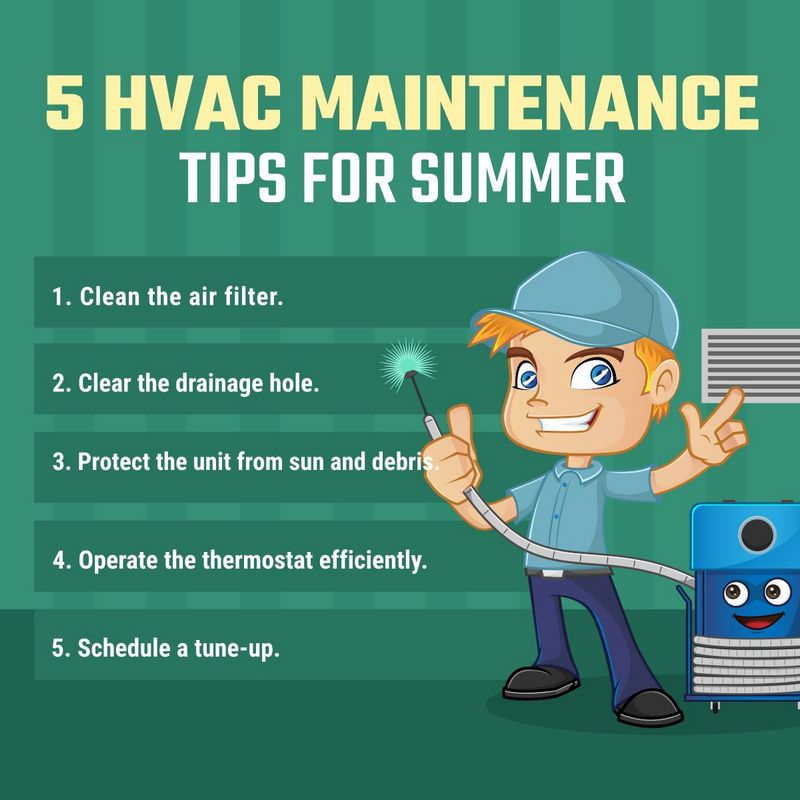
Here are some tips for inspecting and cleaning your ducts:
- Start by visually inspecting your ductwork for any signs of damage, such as loose or disconnected sections, holes, or leaks.
- Check for excessive dust or debris inside the ducts.
- If there are visible signs of mold growth, consider hiring a professional to clean and treat the mold.
- Use a vacuum cleaner with a long hose attachment to remove dust and debris from the ducts.
- Consider using brush attachments or a duct cleaning kit to reach and clean hard-to-reach areas.
- Wipe down the vent covers and registers with a damp cloth or use a nozzle attachment on your vacuum cleaner.
- For more thorough cleaning, hire a professional duct cleaning service that uses specialized equipment to clean the entire duct system.
How often should you inspect and clean your ducts?
It is recommended to inspect and clean your ducts at least once every 3 to 5 years, or more often if you notice any signs of problems, such as reduced airflow or visible mold growth. However, if you have pets, allergies, or live in a dusty environment, more frequent duct cleaning may be necessary.
Conclusion
Inspecting and cleaning your ducts as part of your seasonal HVAC maintenance routine can help to improve the efficiency and performance of your HVAC system while ensuring cleaner and healthier indoor air. Make sure to follow the above tips and consider hiring a professional duct cleaning service for a more thorough cleaning.
Check and Clean Drainage System
One important aspect of seasonal HVAC maintenance is checking and cleaning the drainage system. Over time, the drainage system can become clogged with debris, dirt, and other build-up, which can lead to water leaks or even system malfunction.
Here are some tips for checking and cleaning your HVAC drainage system:
- Inspect the drain line: Start by inspecting the drain line for any signs of blockage or damage. Look for standing water, mold growth, or leaks around the drain line. If you notice any issues, it’s important to address them as soon as possible.
- Clean the drain line: Use a wet/dry vacuum or a pipe cleaner to clean out any debris or dirt that may have accumulated in the drain line. Be careful not to damage the line while cleaning.
- Check the drain pan: Remove the drain pan and check for any standing water or clogs. If you find any blockages, remove them and clean the pan thoroughly.
- Flush the drain line: Use a mixture of water and vinegar to flush the drain line. This helps to remove any remaining debris and keeps the line clear.
- Install a drain pan overflow switch: Consider installing a drain pan overflow switch as an added layer of protection. This switch will automatically shut off your HVAC system if the drain pan starts to overflow.
By regularly checking and cleaning your HVAC drainage system as part of your seasonal maintenance routine, you can ensure that your system continues to run efficiently and avoid any potential water damage or system issues.
Inspect and Tighten Electrical Connections
One of the important tips for seasonal HVAC maintenance is to inspect and tighten electrical connections. Faulty electrical connections can lead to various issues in your HVAC system. Loose connections can cause electrical arcing, which can damage the components of your system and increase the risk of fire.
To ensure that your electrical connections are in good condition, follow these steps:
- Turn off the power: Before inspecting the electrical connections, make sure to turn off the power to your HVAC system at the circuit breaker.
- Check for loose connections: Carefully examine all the electrical connections in your HVAC system. Look for any loose or corroded wires.
- Tighten the connections: If you find any loose connections, use a screwdriver or wrench to tighten them. Make sure to do this gently to avoid damaging the wires.
- Inspect the wiring: While checking the connections, also inspect the wiring for any signs of damage or wear. Replace any damaged wires to ensure the safety of your system.
- Consider professional help: If you are not comfortable handling electrical components or if you notice any major issues, it’s best to seek the help of a professional HVAC technician.
By inspecting and tightening electrical connections, you can prevent electrical problems and ensure the efficient operation of your HVAC system.
Test and Adjust Blower Motor
Maintaining your HVAC system is crucial for optimal performance and energy efficiency. As part of your seasonal maintenance routine, it is important to test and adjust the blower motor. The blower motor is responsible for circulating air throughout your home, so making sure it is functioning properly is essential.
Here are some tips for testing and adjusting your blower motor:
- Inspect the motor: Start by visually inspecting the blower motor for any signs of wear or damage. Look for frayed wires, loose connections, or excessive dirt and debris.
- Check the airflow: Turn on your HVAC system and observe the airflow from the vents. Make sure the airflow is consistent and strong. If it feels weak or uneven, there may be an issue with the blower motor.
- Listen for unusual sounds: Pay attention to any unusual sounds coming from the blower motor. Squealing, grinding, or rattling noises could indicate a problem that needs to be addressed.
- Test the motor speed: Use a multimeter to check the motor speed. The speed should be within the manufacturer’s recommended range. If it is not, you may need to adjust the motor’s settings.
- Adjust the motor settings: Refer to the manufacturer’s instructions to adjust the motor’s speed and other settings if necessary. This will ensure that the blower motor is operating at its optimal level.
By regularly testing and adjusting the blower motor, you can ensure that your HVAC system is running efficiently and effectively. This will not only save you money on energy bills, but also extend the lifespan of your system.
Check and Clean Heat Exchanger
A clean and functioning heat exchanger is crucial for maintaining the efficiency and longevity of your HVAC system. Here are a few tips to help you check and clean your heat exchanger:
- Turn off the power: Before starting any maintenance on your HVAC system, make sure to turn off the power to avoid any accidents.
- Inspect for damage: Carefully examine the heat exchanger for any signs of damage, such as cracks or corrosion. These can lead to leaks and inefficiency.
- Clean the exterior: Use a soft brush or cloth to gently remove dust, dirt, and debris from the exterior of the heat exchanger. This will help prevent any build-up that can hinder performance.
- Remove and clean the interior: Depending on your system, you may need to remove the heat exchanger for a more thorough cleaning. Consult your user manual or hire a professional if needed.
- Use a vacuum or compressed air: Once the heat exchanger is accessible, use a vacuum or compressed air to remove any dust, dirt, or debris that may have accumulated inside.
- Inspect for rust: Rust can indicate water leaks or excessive moisture. If you notice rust, it’s important to address the underlying issue to prevent further damage.
- Replace if necessary: If your heat exchanger is severely damaged or corroded, it may be necessary to replace it. Consult a professional HVAC technician for assistance.
Regularly checking and cleaning your heat exchanger as part of your seasonal HVAC maintenance can help ensure that your system operates efficiently and safely. If you’re unsure about how to perform these tasks or would like professional assistance, don’t hesitate to contact a trusted HVAC technician.
Test and Adjust Gas Pressure
As part of your regular HVAC maintenance routine, it’s important to test and adjust the gas pressure in your system. This is a crucial step to ensure that your HVAC system is running efficiently and safely.
Why is testing and adjusting the gas pressure important?
When the gas pressure in your HVAC system is too high or too low, it can lead to a range of issues. If the gas pressure is too high, it can cause excessive wear and tear on components, leading to premature failure and costly repairs. On the other hand, if the gas pressure is too low, your system may not be able to heat or cool your home effectively, resulting in discomfort for you and your family.
How to test and adjust the gas pressure:
- Start by turning off the power to your HVAC system.
- Locate the gas pressure test port on your system. It is typically located on the gas valve or near the burner assembly.
- Attach a manometer, which is a device used to measure gas pressure, to the test port.
- Turn the power back on to your HVAC system.
- Observe the manometer readings. The gas pressure should fall within the recommended range specified by the manufacturer.
- If the gas pressure is too high or too low, it may need to be adjusted. This should only be done by a qualified HVAC technician.
- Your HVAC technician will use specialized tools to adjust the gas pressure and ensure it is within the correct range.
Regular gas pressure testing and adjustment:
It’s important to have your gas pressure tested and adjusted as part of your regular HVAC maintenance routine. This is typically done on an annual basis. By ensuring that your gas pressure is within the correct range, you can prolong the life of your HVAC system, improve its efficiency, and minimize the risk of breakdowns.
Conclusion:
Testing and adjusting the gas pressure in your HVAC system is an essential part of seasonal maintenance. By ensuring that the gas pressure is within the correct range, you can keep your system running efficiently and avoid costly repairs. Don’t forget to schedule regular HVAC maintenance with a qualified technician to keep your system in top shape.
Inspect and Clean Vents and Registers
One important step in seasonal HVAC maintenance is to inspect and clean your vents and registers. Over time, dust, dirt, and debris can accumulate in these areas, which can impact the airflow and overall efficiency of your HVAC system.
Here are some tips to help you properly inspect and clean your vents and registers:
- Remove and clean the vent covers: Start by removing the vent covers from the walls or ceilings. Use a screwdriver if necessary. Once removed, clean the covers by wiping them with a damp cloth or using a vacuum cleaner. This will help remove any dust or dirt that has accumulated.
- Inspect and clean the ductwork: Shine a flashlight into the vent openings and inspect the ductwork for any signs of debris or blockages. If you see any, use a vacuum cleaner or a brush to remove the debris. Be careful not to damage the ductwork while cleaning.
- Check for obstructions: Make sure that there are no objects blocking the vents or registers, such as furniture, curtains, or rugs. Obstructions can restrict the airflow and reduce the efficiency of your HVAC system.
- Consider professional cleaning: If you notice excessive amounts of dirt or dust in your vents and registers, or if you have allergies or respiratory issues, it may be beneficial to hire a professional HVAC technician to perform a thorough cleaning.
By regularly inspecting and cleaning your vents and registers, you can ensure that your HVAC system operates efficiently, providing you with optimal comfort and energy savings.
Check and Replace Belts
One important step in your seasonal HVAC maintenance is checking and replacing any worn-out belts in your system. A malfunctioning belt can cause your HVAC system to work harder and less efficiently. Here are some tips to help you with this task:
-
Inspect the belts for wear and tear: Start by visually inspecting the belts for any signs of damage or deterioration. Look for cracks, fraying, or stretching. If you notice any issues, it’s time to replace the belts.
-
Measure the belt tension: A properly tensioned belt is crucial for optimal system performance. Use a belt tension gauge to measure the tension of the belts. If the tension is too loose or too tight, adjust it accordingly.
-
Replace the belts if necessary: If the belts show signs of damage or if the tension is incorrect, it’s time to replace them. Use the manufacturer’s guidelines to select the right size and type of belt for your HVAC system. Install the new belts following the proper procedures.
-
Regularly schedule belt checks: It’s important to include belt checks in your regular HVAC maintenance routine. Check the belts at least once a year or more often if you notice any issues. Regular inspections and timely replacements will help keep your system running efficiently.
By regularly checking and replacing belts in your HVAC system, you can ensure that it runs efficiently and avoid unnecessary energy waste. Don’t forget to consult a professional if you’re unsure about any aspect of belt maintenance or replacement.
Test and Adjust Fan Speed
One important aspect of HVAC maintenance is testing and adjusting the fan speed. The fan in your HVAC system plays a crucial role in circulating air throughout your home, maintaining a comfortable temperature, and improving energy efficiency. Here are some tips to help you test and adjust the fan speed:
- Check for Proper Airflow: Start by checking if the air is flowing properly from each register in your home. Poor airflow could indicate a problem with the fan speed or other issues that need attention.
- Inspect the Fan Motor: Take a close look at the fan motor to ensure it’s in good condition. Look for any signs of damage, such as frayed wires or worn-out parts. If you notice any problems, contact a professional HVAC technician for assistance.
- Adjust Fan Speed Settings: If your HVAC system has adjustable fan speed settings, you can optimize it based on your preferences and the current weather conditions. During hot summer months, you may want to set the fan speed higher to enhance cooling. On the other hand, a lower fan speed can be used during mild weather to save energy.
- Consider Upgrading to a Variable-Speed Fan: If your current HVAC system has a single-speed fan, you might want to consider upgrading to a variable-speed fan. Variable-speed fans adjust their speed based on the cooling or heating requirements of your home, which can lead to better energy efficiency and improved comfort.
- Schedule Professional Maintenance: To ensure that your fan speed and HVAC system are working optimally, it’s essential to schedule regular maintenance with a professional HVAC technician. They can diagnose any potential issues, clean the system, and make necessary adjustments to improve performance.
By regularly testing and adjusting the fan speed of your HVAC system, you can ensure a comfortable living environment, improved energy efficiency, and prolong the lifespan of your system. If you need any assistance or professional HVAC maintenance services, don’t hesitate to contact our experienced team.
Inspect and Clear Chimneys and Flues
Regular maintenance is essential for keeping your HVAC system running efficiently throughout the seasons. One important aspect to consider is the inspection and cleaning of your chimneys and flues. This is especially crucial before the start of the heating season.
Here are some tips to help you with the maintenance of your chimneys and flues:
- Inspect for blockages: Look for any signs of debris or obstructions in your chimney or flue. These blockages can prevent proper airflow and lead to inefficient heating.
- Clean out the soot: Over time, soot and creosote can build up inside your chimney and flue. This can create a fire hazard and decrease the efficiency of your heating system. Hire a professional chimney sweep to thoroughly clean the soot and creosote buildup.
- Check for damage: Inspect the interior and exterior of your chimney for any cracks, leaks, or deterioration. These issues can compromise the safety and effectiveness of your HVAC system.
- Install a chimney cap: Consider installing a chimney cap to prevent debris, animals, and precipitation from entering your chimney. This can help maintain proper airflow and reduce the risk of damage.
By regularly inspecting and clearing your chimneys and flues, you can ensure that your HVAC system operates efficiently and safely. Don’t overlook this important aspect of seasonal maintenance!
Schedule Professional Maintenance
Maintaining your HVAC system is crucial for its efficient performance and longevity. While there are many tips you can follow to keep your system running smoothly, nothing beats professional maintenance.
Here are some reasons why scheduling professional maintenance for your HVAC system is essential:
- Expertise: HVAC professionals have the knowledge and expertise to inspect and maintain your system effectively. They can identify any potential issues and perform the necessary repairs or adjustments.
- Efficiency: Regular maintenance by professionals ensures that your HVAC system operates at peak efficiency. They will clean the components, lubricate moving parts, and optimize settings, resulting in energy savings and lower utility bills.
- Extended Lifespan: Proper maintenance can significantly extend the lifespan of your HVAC system. Professionals can identify and address small problems before they escalate into major issues that could require costly repairs or replacement.
Don’t wait for your system to break down unexpectedly. Schedule professional maintenance for your HVAC system to enjoy its optimal performance, energy efficiency, and longevity.
Q & A:
What is HVAC maintenance?
HVAC maintenance refers to the regular upkeep and cleaning of heating, ventilation, and air conditioning (HVAC) systems. It involves tasks such as cleaning or replacing air filters, inspecting and cleaning coils, checking system components for wear and tear, and ensuring proper system operation.
Why is seasonal HVAC maintenance important?
Seasonal HVAC maintenance is important because it helps keep your HVAC system running efficiently. Regular maintenance can help prevent breakdowns, extend the lifespan of your system, improve indoor air quality, and save on energy costs.
What are some tips for seasonal HVAC maintenance?
Some tips for seasonal HVAC maintenance include checking and cleaning air filters, inspecting and cleaning coils, lubricating moving parts, checking system controls and thermostats, inspecting ductwork for leaks, and scheduling a professional HVAC tune-up.
How often should HVAC maintenance be done?
HVAC maintenance should be done at least twice a year, ideally in the spring and fall before the start of the cooling and heating seasons. However, it’s also recommended to perform monthly or quarterly tasks such as checking and changing air filters.

